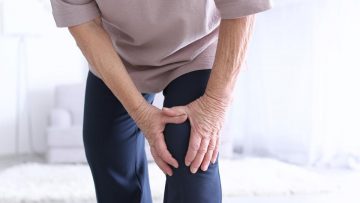- Home
- Editorial
- News
- Practice Guidelines
- Anesthesiology Guidelines
- Cancer Guidelines
- Cardiac Sciences Guidelines
- Critical Care Guidelines
- Dentistry Guidelines
- Dermatology Guidelines
- Diabetes and Endo Guidelines
- Diagnostics Guidelines
- ENT Guidelines
- Featured Practice Guidelines
- Gastroenterology Guidelines
- Geriatrics Guidelines
- Medicine Guidelines
- Nephrology Guidelines
- Neurosciences Guidelines
- Obs and Gynae Guidelines
- Ophthalmology Guidelines
- Orthopaedics Guidelines
- Paediatrics Guidelines
- Psychiatry Guidelines
- Pulmonology Guidelines
- Radiology Guidelines
- Surgery Guidelines
- Urology Guidelines
Removing old cells from joints can delay onset of osteoarthritis

Good news, a study has found that selective removal of old cells, senescent cells (SnCs) from joints can significantly delay the onset of osteoarthritis.
The team presented a novel pharmacologic candidate that alleviates age-related degenerative joint conditions, such as osteoarthritis (OA) by selectively destroying SnCs.
This breakthrough research was led by Dr Chaekyu Kim from Ulsan National Institute of Science and Technology in Sounth Korea and Dr Ok Hee Jeon of the Johns Hopkins University in collaborations with the Mayo Clinic College of Medicine, the Buck Institute for Research on Aging, the University Medical Center Groningen, Unity Biotechnology, Inc., and the University of California, Berkeley.
Senescent cells (SnCs) accumulate with age in many vertebrate tissues and are present at sites of age-related pathlogy.
Although these cells play an essential role in wound healing and injury repair, they may also promote cancer incidence in tissues. For instance, in articular joints, such as the knee and cartilage tissue, SnCs often are not cleared from the area after injury, thereby contributing to OA development.
To test the idea that SnCs might play a causative role in OA, they took both younger and older mice and cut their anterior cruciate ligaments (ACL) to minic injury.
They, then, administered injections of an experimental drug, named UBX0101 to selectively remove SnCs after anterior cruciate ligament transection (ACLT) surgery.
Indeed, the research team reported that aged mice did not exhibit signs of cartilage regeneration after treatment with UBX0101 injections,
The researchers noted that their findings provide new insights into therapies targeting SnCs for the treatment of trauma and age-related degenerative joint disease.
The research appeared in Nature Medicine.

Disclaimer: This site is primarily intended for healthcare professionals. Any content/information on this website does not replace the advice of medical and/or health professionals and should not be construed as medical/diagnostic advice/endorsement or prescription. Use of this site is subject to our terms of use, privacy policy, advertisement policy. © 2020 Minerva Medical Treatment Pvt Ltd